
 |
Last year, we introduced the general availability of AWS Application Migration Service that simplifies and expedites your migration to AWS by automatically converting your source servers from physical, virtual, or cloud infrastructure to run natively on AWS. Since the GA launch, we have made improvements, adding features such as agentless replication, MAP 2.0 auto-tagging and support for optional post-launch modernization actions.
Today we announce three major updates of Application Migration Service to support your migration projects of any size:
- New Migration Servers Grouping – You can group migration servers into “applications,” a group of servers that function together as a single application, and manage the migration stage in “waves,” a plan of migrations including grouping servers and applications.
- Updated Launch Template – You can modify the general settings and default launch template, and this template is then used to generate the Amazon Elastic Compute Cloud (Amazon EC2) instance launch template of subsequently installed source servers.
- Updated Post-Launch Template – You can configure custom modernization actions for the post-launch template. You can associate any AWS Systems Manager documents and their parameters with a post-launch custom action.
Let’s dive deep into each launch!
New Migration Servers Grouping – Applications and Waves
Customers have clusters of servers that comprise an application, with dependencies between them. The servers within an application share the same configurations, such as network, security policies, etc. Customers want to migrate complete applications and services, as well as set up and configure the application environment.
We introduce the new concept of “application,” representing a group of servers, and you can manage the migration of an application.

The new application feature groups source servers together with the same application for integrated migration jobs. It includes configuring the environment before migrating the application’s servers, creating the appropriate security groups, and performing bulk actions on all of the applications servers.
You can track and monitor the status of application migration and data replication within the migration lifecycle from source servers.
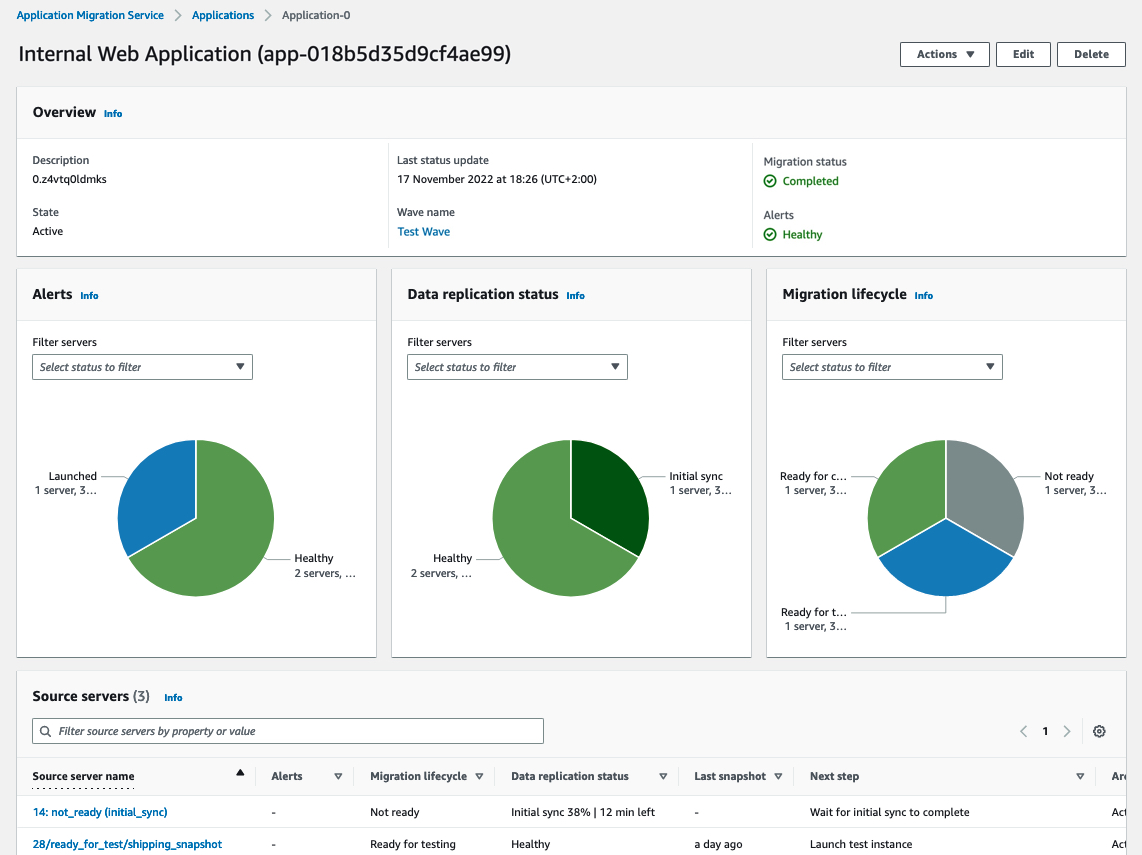
Also, customers with large migrations plan their migration, grouping servers and applications in waves. These are logical groups that describe the migration plan over time. Waves may include multiple servers and applications that do not necessarily have dependencies between them.
We introduce the new concept of “wave,” assisting customers in building their migration plan, as well as executing and monitoring it.

Application Migration Service supports actions on waves, such as launching all servers in a testing environment or performing cutover of a wave. Application Migration Service also provides reporting and monitoring information at the wave level so that customers will be able to manage their migration projects.
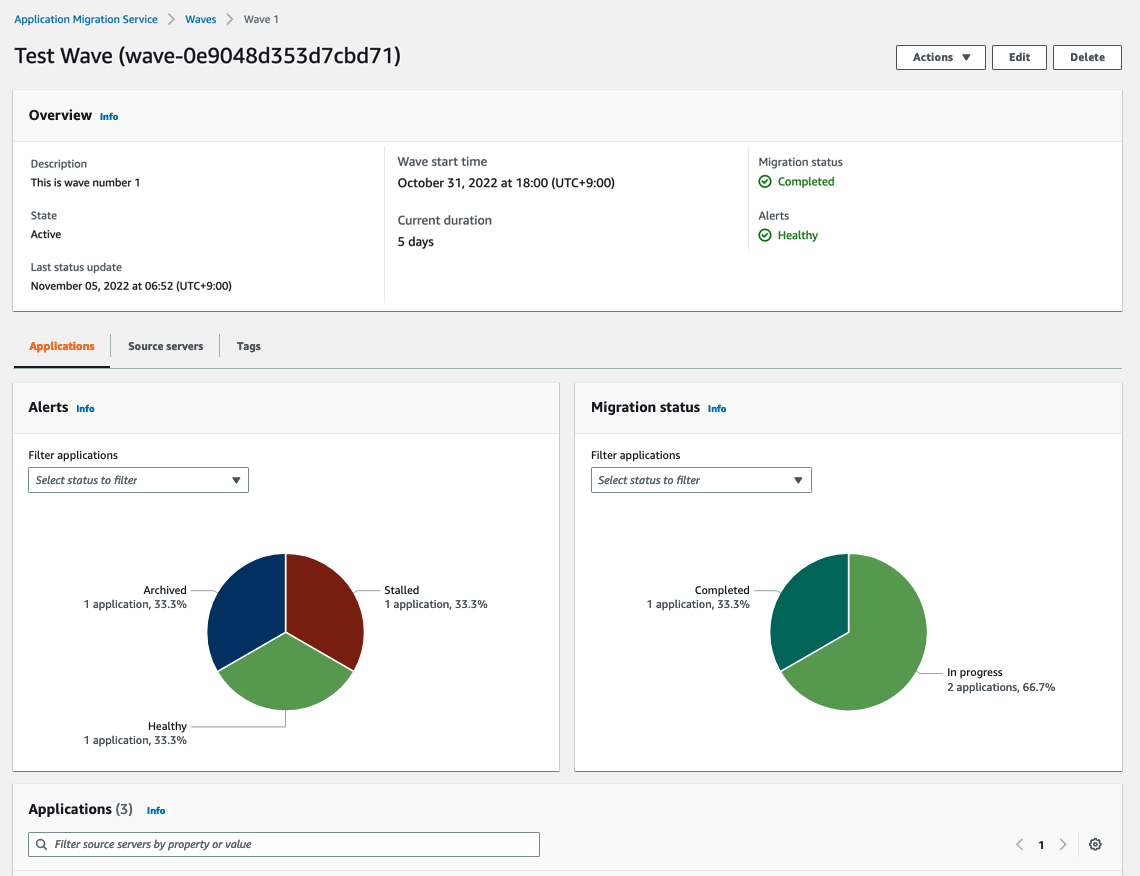
Updated Launch Template – Launch Settings and Default EC2 Launch Template
The launch template allows you to control the way Application Migration Service launches instances in the AWS Cloud. You can change the settings for existing and newly added servers individually. Previously, we only supported the AWS Migration Acceleration Program (MAP) option to add tags to launched migration instances.
We added two new options to modify the global launch template, and this template is then used to generate the EC2 launch templates of subsequently installed source servers. Customers start with a global Application Migration Service launch template, which can be used for predefined launch templates. They would then potentially only have to perform modifications to a smaller subset of source servers, as opposed to all of them.
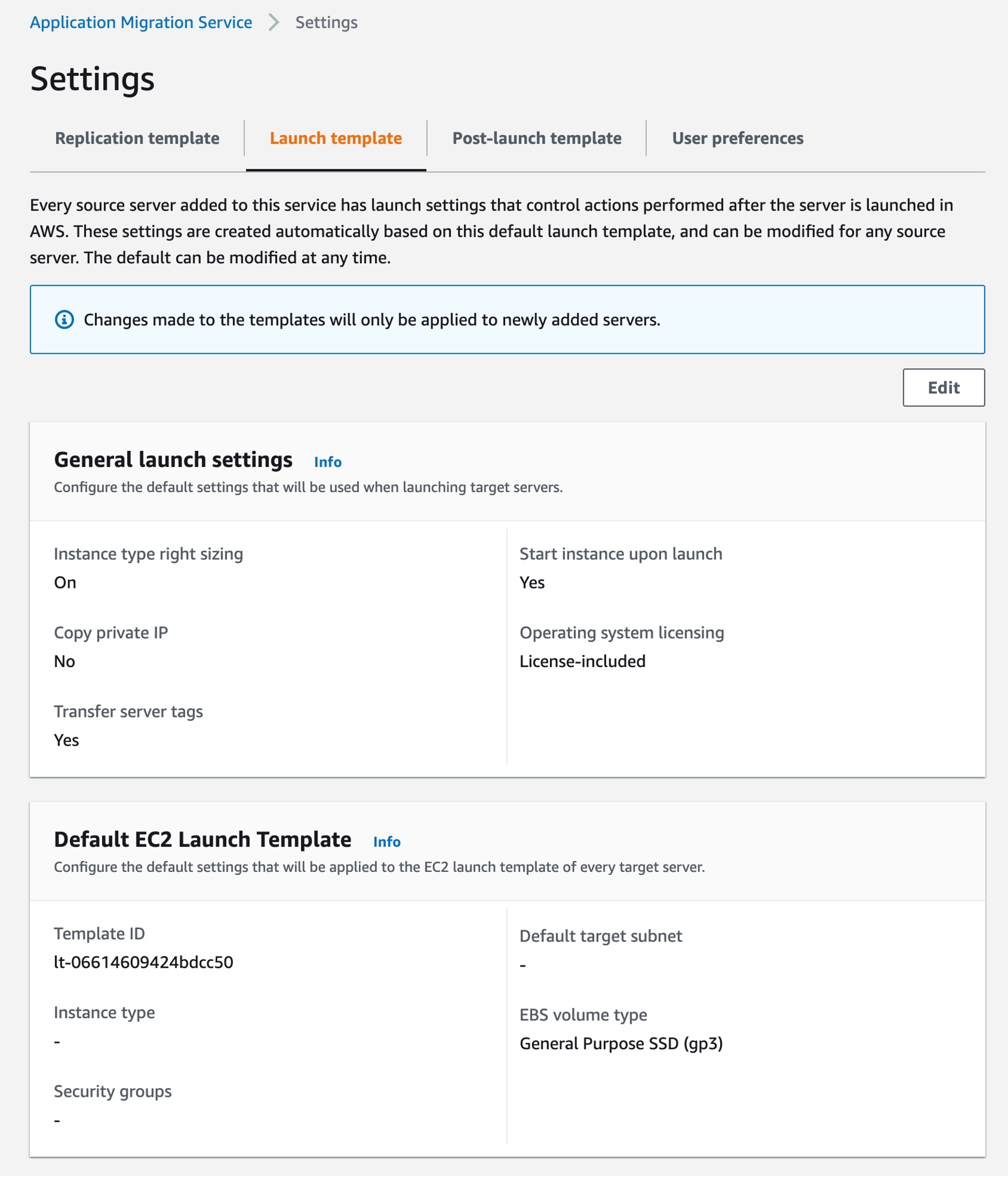
Here are default settings that will be used when launching target servers:
- Activate instance type right-sizing – The service will determine the best match instance type. The default instance type defined in the EC2 template will be ignored.
- Start instance upon launch – The service will launch instances automatically. If this option is not selected, the launched instance will need to be manually started after launch.
- Copy private IP – This enables you to copy the private IP of your source server to the target.
- Transfer server tags – Transfer the tags from the source server to the launched instances.
- Operating system licensing – Specify whether to continue to use the Bring Your Own License model (BYOL) of the source server or use an AWS provided license.
Also, you can configure the default settings that will be applied to the EC2 launch template of every target server, such as default target subnet, additional security groups, default instance type, Amazon Elastic Block Store (Amazon EBS) volume type, IOPS, and throughput to associate with all instances launched by this service.
Updated Post-Launch Template – Custom Actions
Post-launch settings allow you to control and automate actions performed after the server has been launched in AWS. It includes four built-in actions: installing the AWS Systems Manager agent, installing the AWS Elastic Disaster Recover agent and configuring replication, CentOS conversion, and SUSE subscription conversion.
We added a new option to configure custom actions in the post-launch template. You can associate any AWS Systems Manager and its action parameters. It also includes the order in which the actions will be executed and the source server’s operating systems for which the custom action can be configured.
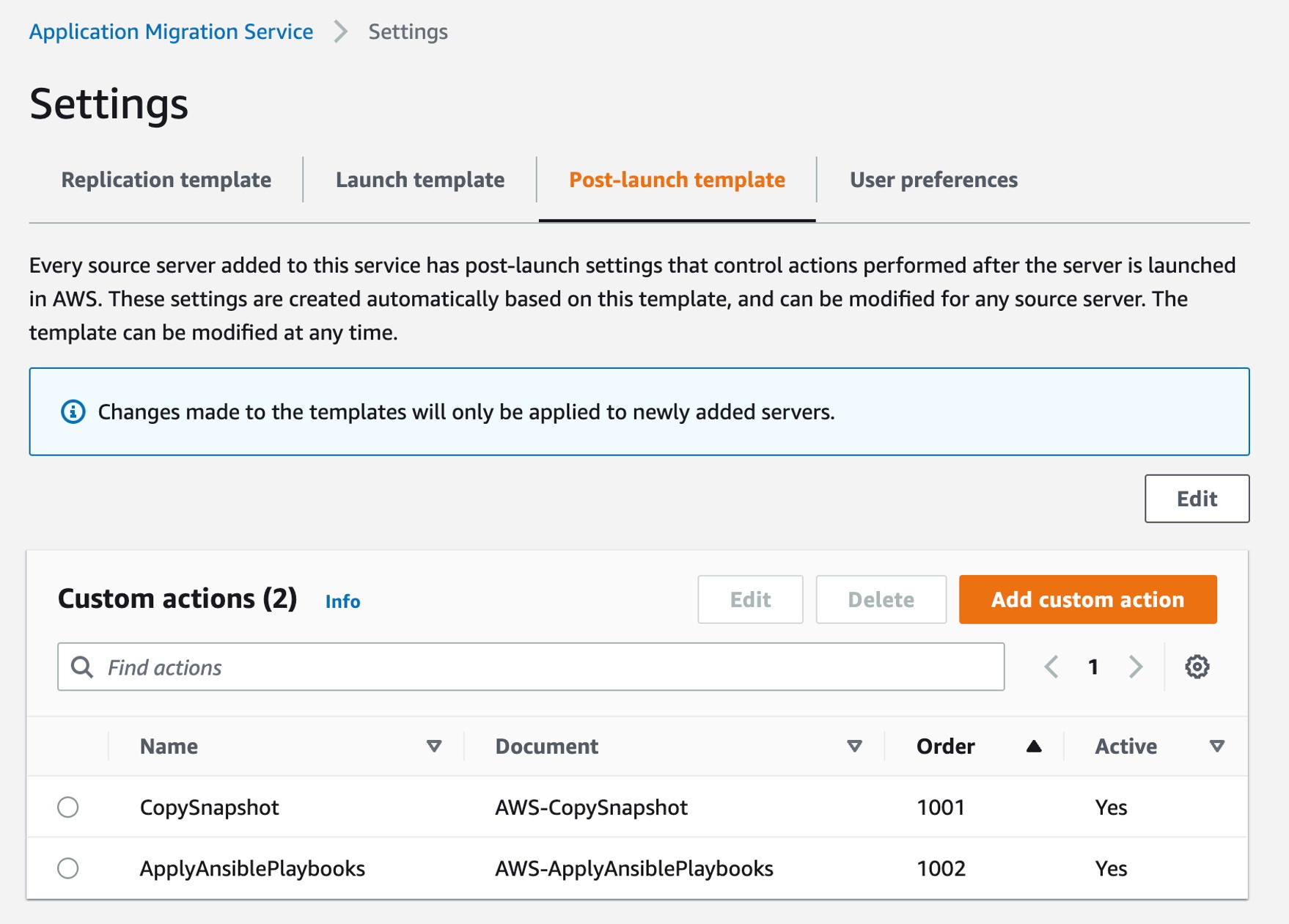
Choose Add custom action to make a new post-launch custom action. For example, the AWS-CopySnapshot, one of Systems Manager Automation’s runbooks, copies a point-in-time snapshot of an EBS volume. You can copy the snapshot within the same AWS Region or from one Region to another.
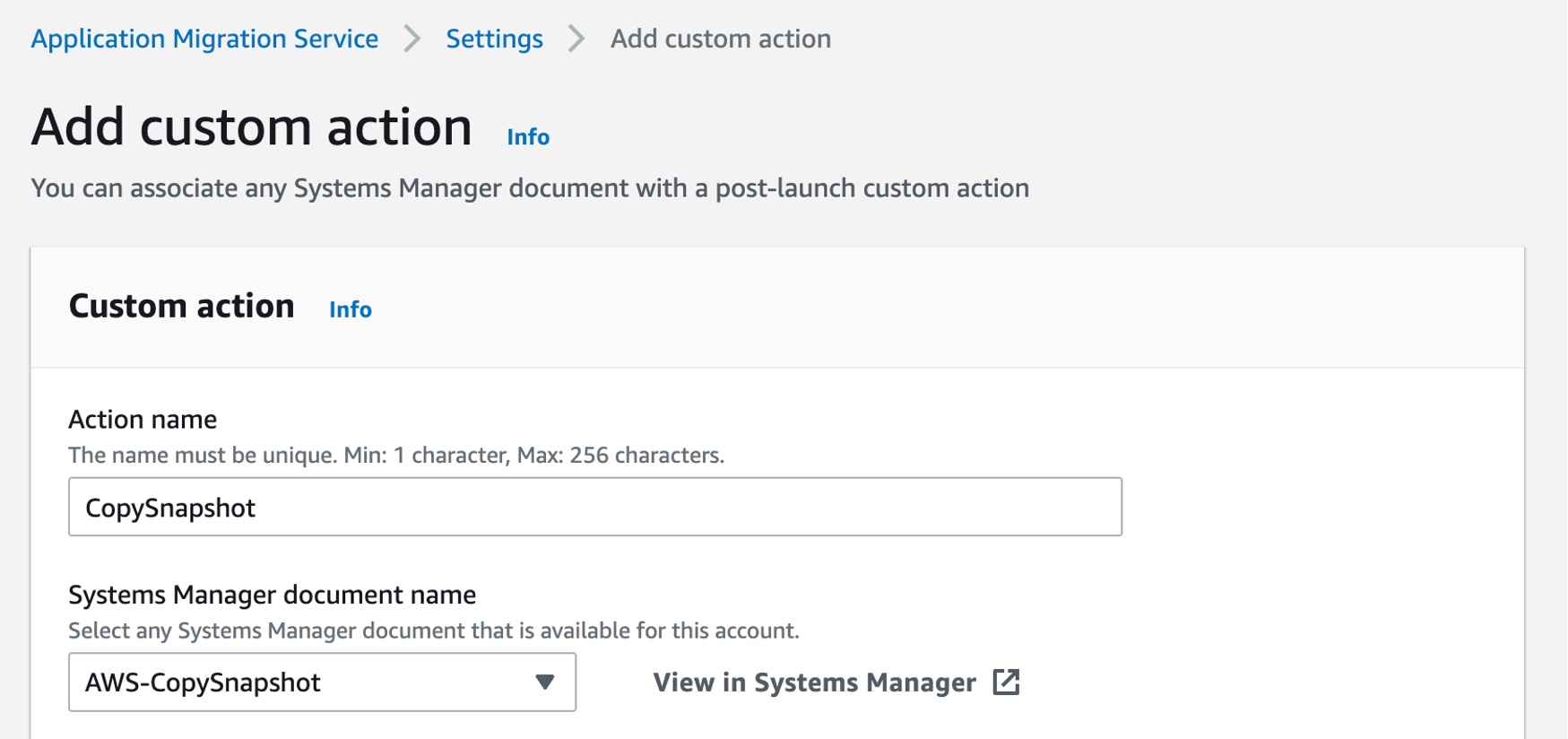
In the Action parameters, you can assign SnapshotId and SourceRegion to run the AWS Systems Manager CopySnapshot runbook.

You can create your own Systems Manager document to define the actions that Systems Manager performs on your managed instances. Systems Manager offers more than 100 preconfigured documents that you can use by specifying parameters as the post-launch actions. To learn more, see AWS Systems Manager Automation runbook reference in the AWS documentation.
Now Available
The new migration servers grouping, updates on the launch, and post-launch template are available now, and you can start using them today in all Regions where AWS Application Migration Service is supported.
To learn more, see the Application Migration Service User Guide, give it a try, and please send feedback to AWS re:Post for Application Migration Service or through your usual AWS support contacts.
– Channy



